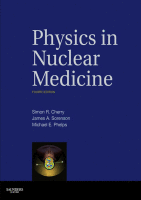Physical Address
304 North Cardinal St.
Dorchester Center, MA 02124

Image processing refers to a variety of techniques that are used to maximize the information yield from a picture. In nuclear medicine, computer-based image-processing techniques are especially flexible and powerful. In addition to performing basic image manipulations for edge sharpening,…

Virtually all modern positron emission tomography (PET) scanners and an increasing number of single photon emission computed tomography (SPECT) systems are integrated with an x-ray computed tomography (CT) scanner. These hybrid imaging systems are capable of acquiring PET or SPECT…

A basic problem in conventional radionuclide imaging is that the images obtained are two-dimensional (2-D) projections of three-dimensional (3-D) source distributions. Images of structures at one depth in the patient thus are obscured by superimposed images of overlying and underlying…

Image quality refers to the faithfulness with which an image represents the imaged object. The quality of nuclear medicine images is limited by several factors. Some of these factors, relating to performance limitations of the gamma camera, already have been…

The performance of a gamma camera system is defined by the sharpness and detail of the images it produces, the efficiency with which it detects incident radiation, its ability to measure the energy of the incident γ rays (to minimize…

Radionuclide imaging is the most important application of radioactivity in nuclear medicine. Radionuclide imaging laboratories are found in almost every hospital, performing hundreds and even thousands of imaging procedures per month in larger institutions. In this chapter, we discuss briefly…

Radiation counting systems are used for a variety of purposes in nuclear medicine. In vitro (from Latin, meaning “in glass”) counting systems are employed to measure radioactivity in tissue, blood, and urine samples; for radioimmunoassay and competitive protein binding assay…

Nuclear medicine studies are performed with a variety of types of radiation measurement instruments, depending on the kind of radiation source that is being measured and the type of information sought. For example, some instruments are designed for in vitro…

Most of the radiation measurement systems used in nuclear medicine use pulse-height analysis ( Chapter 8 , Section C) to sort out the different radiation energies striking the detector. This is called pulse-height or energy spectrometry. It is used to…

All measurements are subject to measurement error. This includes physical measurements, such as radiation counting measurements used in nuclear medicine procedures, as well as in biologic and clinical studies, such as evaluation of the effectiveness of an imaging technique. In…